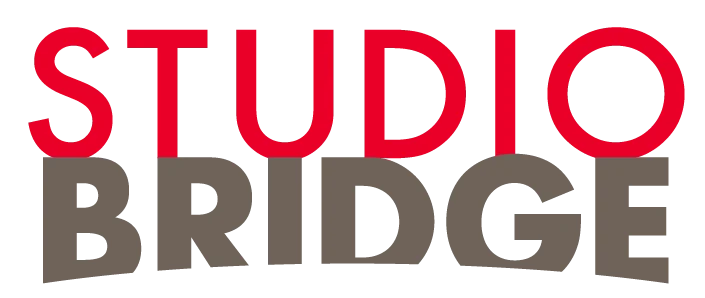1. Introduction: Connecting Mythical Transformations and Modern Digital Narratives
Throughout history, storytelling has served as a mirror to human experience, with mythical transformations playing a central role in shaping cultural norms and values. From the ancient tales of gods and heroes to contemporary narratives, these transformations symbolize profound societal shifts and individual journeys. Today, the rise of digital media has transformed how stories are told and consumed, leading to a new landscape where mythic themes are reinterpreted within virtual spaces and interactive platforms.
The proliferation of digital narratives—through video games, social media, and online communities—has influenced modern myths, creating a dynamic interplay between age-old archetypes and cutting-edge technology. Understanding these parallels offers insight into how digital culture not only reflects but also reshapes our collective mythic consciousness. This article explores the fascinating connections between mythical transformations and digital storytelling, illustrating how ancient motifs adapt to contemporary contexts with vivid examples.
Table of Contents
- The Evolution of Mythic Archetypes in the Digital Age
- Mythical Transformations as Reflections of Societal Changes
- The Symbolism of Power and Corruption in Digital Narratives
- Autoplay Limits and Illusory Boundaries: Modern Digital Parallels
- Ms Robin Hood: A Modern Mythic Reflection
- Non-Obvious Layers of Myth and Digital Transformation
- 8. Conclusion
2. The Evolution of Mythic Archetypes in the Digital Age
a. From ancient hero myths to digital antiheroes
Historically, hero myths embodied ideals of virtue, bravery, and sacrifice—think of Gilgamesh or Hercules. In the digital era, these archetypes have evolved into antiheroes and complex protagonists who often challenge traditional morality. Characters like Walter White from Breaking Bad or the antihero in popular video games exemplify this shift, reflecting contemporary uncertainties about authority and morality.
b. How modern stories repurpose mythical symbols for new contexts
Modern narratives frequently adapt symbols like the hero’s journey or the trickster figure to fit digital platforms. For example, social media influencers often embody the trickster archetype, subverting traditional authority while gaining followers. Video games use mythic motifs—such as quests for redemption or transformation—to engage players deeply, illustrating how ancient symbols are repurposed for interactive storytelling.
c. The role of technology in reshaping mythic identities
Technology acts as both a canvas and a catalyst for mythic transformation. Virtual reality (VR) and augmented reality (AR) allow users to inhabit mythic roles, blurring the line between myth and reality. Platforms like online role-playing games (RPGs) enable players to craft mythic identities, embodying archetypes like the hero, the rebel, or the guardian, thus democratizing myth-making processes.
3. Mythical Transformations as Reflections of Societal Changes
a. Societal upheavals and their influence on myth reinterpretation
Major societal upheavals—be it wars, economic crises, or political revolutions—often lead to reinterpretations of existing myths or the creation of new ones. The myth of the lone hero fighting against systemic corruption has found renewed relevance in digital protests and online movements, exemplifying how societal struggles are mythologized into narratives of resistance.
b. 2016 global populist upheavals and their metaphorical echoes in digital stories
The political upheavals of 2016, including Brexit and the rise of populist leaders, can be seen as modern mythic dramas. Online, these events inspired stories of rebellion and transformation—paralleling mythic themes of chaos and renewal—highlighting how societal unrest feeds into digital storytelling as allegories for change.
c. The escapism market: mythic themes as a response to societal chaos
In times of societal turbulence, escapism becomes a refuge. Video games and online narratives often draw on mythic themes—heroic quests, battles between good and evil—to provide psychological relief. For instance, the allure of mythic characters like Robin Hood, reinvented in digital contexts, offers a sense of justice and rebellion amid chaos.
4. The Symbolism of Power and Corruption in Digital Narratives
a. Mythical figures representing authority and their modern adaptations
Ancient myths often depicted gods and kings embodying authority, sometimes corrupted—like Zeus or King Midas. Modern narratives adapt these symbols to critique real-world power structures. Characters such as corrupt politicians or corporate magnates in digital stories symbolize the mythic figure of authority, often highlighting themes of greed and moral decay.
b. The crowned pig as an ironic symbol of corrupted authority in digital spaces
A contemporary example is the depiction of a crowned pig, used ironically to represent the corruption and excess of modern rulers or institutions. This motif echoes the satirical tradition in mythology, where figures like the Trojan Horse or the Pig of the Beast in allegories symbolize deception and moral decline.
c. Connection to licensed gambling and control illusions
In digital environments, especially online gambling, symbols of control—such as the illusion of mastery or luck—mirror mythic themes of fate and hubris. The controlled chaos within these platforms often reflects mythic battles between order and disorder, highlighting societal anxieties about manipulation and power.
5. Autoplay Limits and Illusory Boundaries: Modern Digital Parallels
a. How autoplay functions as a modern myth of control and loss of agency
Autoplay features in videos and games serve as modern myths of control—creating an illusion that narratives are self-sustaining, yet subtly stripping users of agency. This echoes mythic themes of fate and predestination, where characters believe they control their destiny but are ultimately driven by larger forces.
b. Illusory boundaries as contemporary mythic borders — control versus chaos
Digital boundaries—such as scrolling limits or platform restrictions—serve as mythic borders, delineating order from chaos. When these borders are crossed or manipulated, it reflects age-old conflicts between societal control and the chaos of the unknown, reminiscent of mythic quests beyond the borders of the known world.
c. The psychological impact of automated narratives on user perception
Automated narratives influence perception by fostering dependency and altering notions of free will. Studies indicate that prolonged exposure to automated content can diminish critical thinking, similar to mythic stories where characters are swept into uncontrollable fates, emphasizing the importance of awareness in digital consumption.
6. Ms Robin Hood: A Modern Mythic Figure and Its Reflection of Digital Narratives
a. Overview of Ms Robin Hood as a character embodying mythic traits
The character of Ms Robin Hood exemplifies a modern reinterpretation of the legendary outlaw, embodying traits of rebellion, justice, and transformation. Unlike her medieval counterpart, she operates within digital spaces—using technology to challenge corrupt systems and empower the marginalized.
b. How the figure illustrates themes of rebellion, justice, and transformation in digital contexts
This modern figure resonates with mythic archetypes by embodying the hero’s journey—defying authority and seeking justice. Her actions mirror real-world digital activism, where online campaigns and gaming narratives like slot game Ms Robin Hood serve as allegories of resistance and societal change.
c. The role of such characters in shaping user engagement and cultural myths
Characters like Ms Robin Hood influence cultural myths by inspiring users to see themselves as agents of change. They foster a collective identity rooted in rebellion against injustice, reinforcing mythic themes of heroism and transformation within digital communities.
7. Non-Obvious Layers: Deepening the Understanding of Myth and Digital Transformation
a. The psychological underpinnings of mythic transformations in digital environments
Digital myths tap into primal psychological structures—such as the need for meaning, belonging, and agency. Neurological studies suggest that engaging with mythic stories activates brain regions associated with empathy and reward, reinforcing behaviors aligned with societal norms or resistance.
b. Mythic storytelling as a tool for social critique and resistance in the digital era
Digital myths serve as powerful vehicles for critique, revealing societal flaws through allegory. For example, online narratives and memes can critique authority figures or systemic inequalities, echoing ancient mythic functions of social resistance and moral education.
c. The influence of digital myths on real-world behavior and societal norms
As digital stories spread, they influence societal norms—shaping perceptions of justice, power, and morality. Viral digital myths can inspire real-world activism or reinforce stereotypes, demonstrating the profound impact of mythic narratives beyond virtual spaces.
8. Conclusion: Synthesizing Mythical Transformations and Digital Narratives
Modern digital storytelling continues the ancient tradition of mythic transformation, adapting archetypes and themes to reflect societal changes, technological advances, and psychological needs. From antiheroes to rebellious figures like Ms Robin Hood, these narratives serve as mirrors and molders of cultural identity.
Understanding these parallels enhances media literacy and cultural awareness, allowing us to critically engage with the stories that shape our perceptions. As technology evolves, so too will the myths we craft—underscoring the importance of conscious participation in digital myth-making.
For those interested in exploring how mythic themes are embedded in modern digital entertainment, the slot game Ms Robin Hood offers a contemporary example of mythic storytelling in interactive form, embodying timeless principles of rebellion, justice, and transformation.


No Comments